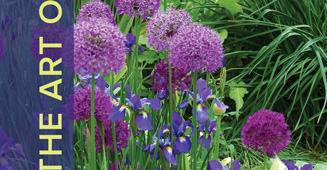

Contributor
- Topics: Archive, Inspired Gardens & Design
 For gardeners, autumn possesses ever as much in terms of anticipation as does spring. Colchicums and autumn crocus, asters, the fire of sumac and maples and, of course, spiced pumpkin latte’s on those first frosty late October mornings. This year, however, there exists an ancillary expectancy for those enamored with making good gardens; the release of The Art of Gardening by the director and staff of Chanticleer, the darling of North American botanical gardens.
For gardeners, autumn possesses ever as much in terms of anticipation as does spring. Colchicums and autumn crocus, asters, the fire of sumac and maples and, of course, spiced pumpkin latte’s on those first frosty late October mornings. This year, however, there exists an ancillary expectancy for those enamored with making good gardens; the release of The Art of Gardening by the director and staff of Chanticleer, the darling of North American botanical gardens.
Chanticleer is the standard bearer of excellence in horticulture worldwide, demonstrating what can result when playful creativity and an obsession with detail collides head-on with singular plantsmanship. The garden, on the outskirts of Wayne, Pennsylvania, and built by Adolph Rosengarten in the early teens of the 20th century, is roughly 50 acres in size. Chanticleer opened to the public in 1993 and has dazzled and bewitched visitors ever since.
The garden director and primary author of this book, R. William Thomas, has fostered an enviable chemistry amongst his staff of seven highly competent and respected gardeners. Each contributed sections of the manuscript focusing on the specific areas within Chanticleer that they are assigned to, or take-home principles that guide them. With a model that might be more frequently followed by other public gardens, Thomas has steered Chanticleer by encouraging creative but convivial competition amongst his gardening staff. The proof of its success is in the confection that is Chanticleer.
After a welcoming of readers at the gates of this book by its director, the visitor is channeled through consecutive rooms and design principles where they are greeted by the people who know the concepts more intimately than anyone—the individuals that approach the spaces each gardening season with the intent to make them more memorable than the previous year. As the book artfully demonstrates, the quarters lead to one another without discordance, transitioning as if chapters in a well-crafted novel. Having individual and unique voices act as mentors while expounding on an element they find both instrumental and translatable to all gardens makes for a satisfying read. It is one of the few gardening books I have read from cover to cover in a single sitting.
Throughout the pages, you are exposed to detail in hardscape that is seldom encountered in American horticulture. Innovative and comfortable furniture made from fallen trees on the property, designed and built on site, sensational iron gates and fences forged in their workshop, an impossibly handsome divan and chairs chiseled from stone, all are crafted and installed to exact the best effects possible from any space.
Yet mostly it is about plants, a point that Thomas makes early on in the narrative. A yearly unfolding of hundreds of thousands of bulbs, unusual shrubs, vines, trees, and perennials, planted just, well, just. In the garden, as well as through a virtual terra cotta army of handsome vessels, exists a devotion to tropicals in combinations the Maker itself could not have comprehended. It is unabashedly bacchanalian with no apologies, a pleasure garden that makes one blush to experience it in the company of others.
Though admittedly, most of us do not possess the budget for such extravagance, nor would we have the time or energy to implement it if we had. Yet in these pages are an obvious dedication to those things that we, the low and undeserving, can take away to employ on a human rather than god-like scale. Exquisite and novel flower arrangements, framing views, and playing hardscape with plant material to name a few.
These experiences and moments are exquisitely captured by photographer Rob Cardillo and beautifully reproduced on the pages. I have admired his garden photography over many years but find this body of work to be his best to date.
For your Christmas present this year, suggest in your second tier a copy of The Art of Gardening. First tier would be a summer visit to Chanticleer in person where you will also buy this book. It is a must for any serious gardener.
Daniel J. Hinkley, director Heronswood Garden,
Monrovia Growers consultant, plant explorer
Indianola, Washington










Responses